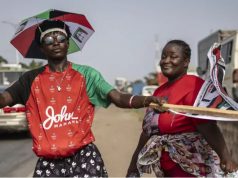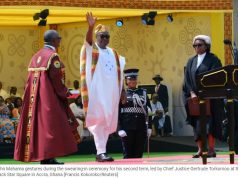Ghana has the second highest number of human capital in Sub Saharan Africa, the Global Human Capital Report 2017, has shown.
According to the report, Rwanda placed first with Cameroon and Mauritius ranking third and fourth respectively.
The report claimed that the aforementioned countries topped the list within the sub-region because they “have developed more than 60 percent of their human capital.”
“This places them ahead of the Latin America and the Caribbean, Middle East and North Africa and South Asia regional averages, and on a par with the lower half of the East Asia and the Pacific region and Index global average,” the report added.
The report also attributed Ghana and Rwanda’s successes to bridging “education and employment gender gaps.
“The two top-ranked countries in the region, Rwanda and Ghana, owe their comparatively strong performance to, respectively, almost completely closed education and employment gender gaps and significantly improved educational attainment of the country’s younger generations.”
The report also cited some economies including Nigeria and Ethiopia which it “face a range of human capital challenges, including low levels of literacy and basic education.”
Below is a summary of the report on Sub Saharan Africa:
Sub-Saharan Africa
A cluster of countries in this region, including Rwanda (71), Ghana (72), Cameroon (73) and Mauritius (74), have developed more than 60% of their human capital. This places them ahead of the Latin America and the Caribbean, Middle East and North Africa and South Asia regional averages, and on a par with the lower half of the East Asia and the Pacific region and Index global average.
Other economies, however, such as Nigeria (114) and Ethiopia (127), face a range of human capital challenges, including low levels of literacy and basic education. With an overall average score of 52.97, the Sub-Saharan African region is the lowest-ranked region in the Index.
In total, the Index covers 29 countries from this region, of which five are from the upper-middle income group, eight from the lower-middle income group and the remaining 16 from the low-income group. Despite this comparatively high regional diversity in income levels, the Sub-Saharan African region exhibits a number of similar patterns across all age groups and aspects of its human capital potential profile. In particular, Sub-Saharan Africa scores highly on the Deployment subindex, due to high labour force participation, with five of the top 10 countries hailing from the region. However, with below-average Capacity and Know-how subindex scores, the region as a whole has much to benefit from developing a greater share of its human capital from deployment beyond routine occupations.
The two top-ranked countries in the region, Rwanda (71) and Ghana (72), owe their comparatively strong performance to, respectively, almost completely closed education and employment gender gaps and significantly improved educational attainment of the country’s younger generations. Like Kenya (78), both countries benefit from the stock of know-how embodied in large medium-skilled employment sectors and comparatively strong education quality and staff training, laying the foundation for building their future human capital potential. However, all three countries still have room for further improvement in their secondary education enrolment rates, ensuring this progress is shared as broadly as possible across their populations.
Southern African countries—Botswana (91), Zambia (80), South Africa (87) and Namibia (99)—are particularly successful in building the future human capital potential of their youngest generations, outperforming the rest of the region on the Development subindex. Yet they perform below the regional average when it comes to deploying their current workforce. Among them, South Africa (87), the Sub-Saharan African region’s second largest economy, has the continent’s highest share of its workforce in high-skilled occupations and is well-regarded for its staff training, but underperforms when it comes to school quality.
Ranking in the lower midfield of the region, Nigeria (114), Sub-Saharan Africa’s largest economy and most populous country, has a relatively large pool of tertiary-educated workers, especially among its older generations, and comparatively strong staff training. However, it simultaneously records low primary and secondary education attainment across all age groups and one of the lowest current primary school enrolment rates globally, pointing to excessively uneven human capital outcomes and the untapped opportunities of pursuing a more inclusive human capital development approach.
The lowest-ranked high-population country in the region, Ethiopia (127), ranks fourth from the bottom on the Index overall—ahead only of Senegal, Mauritania and Yemen—with low performance on the Capacity and Deployment subindexes due to high unemployment and underemployment across all generations.








